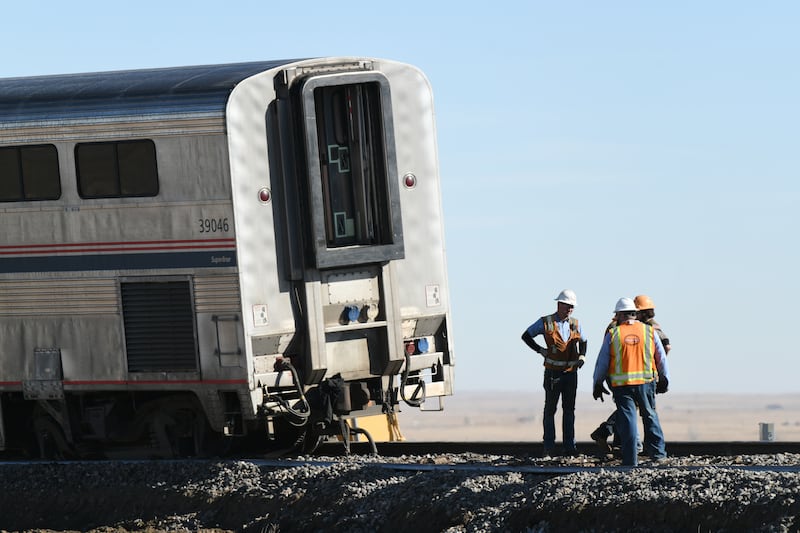The fight against fraud “is a long-term enterprise,” Elon Musk said recently. “If we take our eye off the ball, the waste and fraud will come roaring back,“ he added. And a recent report summary released by Amtrak’s Office of Inspector General (OIG) shows just how loud fraud can roar.
The OIG’s report revealed that it had uncovered the largest Amtrak employee criminal conspiracy in its history—a widespread, years-long scheme in which at least 119 Amtrak employees conspired with health care providers to bilk Amtrak’s health care plan of more than $12 million over just three years. According to the Amtrak OIG, the employees accepted thousands of dollars in cash kickbacks so the health care providers could use their insurance information to file fraudulent and questionable medical claims for services that were never provided or not medically necessary. The fraudsters billed Amtrak’s health care plan over $16 million and pocketed more than $12 million.
Thanks to the OIG’s investigation a dozen perpetrators, including eight employees and four medical professionals, have already been convicted, with restitution amounting to millions of dollars and counting. One acupuncturist caught in an OIG undercover sting was convicted and must pay back more than $9 million. The OIG also referred a whopping 61 active employees strewn across Pennsylvania, Delaware, New Jersey, New York, Maryland, Connecticut, and Washington, D.C., to Amtrak for personnel action.

Beyond the scale of the conspiracy, this investigation is noteworthy for three reasons.
First, it shows why we need Inspectors General. IGs provide crucial oversight of our federal taxdollars. IGs are uniquely situated to not only investigate misconduct, but also make recommendations on how their agencies can improve and hold their agencies accountable for failing to implement recommended changes. In the Amtrak case, the IG’s report notes in detail that it had alerted Amtrak about weaknesses in its health care system that can be exploited by fraudsters multiple times since at least 2018.
Second, this investigation caught my eye because of the way the Amtrak OIG uncovered the scheme in the first place: data analysis. “The investigation was sparked,” according to the OIG’s summary, “when an OIG agent noticed unusual billing patterns in reports from OIG data analysts. Further reviews by the analysts identified three New York health care providers with questionable billings who also shared a high number of Amtrak employees as patients.”
This investigation, with its reliance on data analysis, is a good illustration of the future of IG oversight: harvesting the government’s huge streams of data to find anomalies and patterns that indicate suspicious behavior. Bolstering data analytics has been a focal point for the Inspector General community for years. Federal agencies have extensive data under their specific purview (think of Social Security or Medicare), and the IGs are well-situated to slice and dice those data sets for potential fraud or waste. Importantly, the IGs use data analytics to uncover fraud not only in their own agencies, as reflected in the Amtrak investigation, but also across the entire government. For example, the IG community’s fight against fraud in the COVID pandemic funding used data to uncover billions of dollars in waste, fraud, and abuse in pandemic spending across federal agencies. Americans should expect to see more data-based oversight in the future and that’s a good thing.

The third noteworthy aspect of the Amtrak investigation, with its reliance on data analytics, is how it could inform the future of DOGE, the Department of Government Efficiency. As Musk’s tenure at DOGE apparently winds down in the coming weeks, the question becomes what will DOGE 2.0 look like? Some have raised various possibilities, including that DOGE’s high-powered techies will focus on analyzing huge federal data sets to ferret out fraud, waste, and abuse.
If DOGE reframes in that way—shifting from Musk’s chainsaw, cut-everything-in-sight framework to a more sustainable future of using data to improve government programs—the IG community should be a natural ally. With their deep understanding of the contracting and grant processes, budget information, and the agencies’ individual programs, the IG community can help DOGE improve the performance of federal agencies for the benefit of the American people.
But this would require a few changes. First, it would require a mindset shift in DOGE, which has seemingly sidelined the OIGs. Instead, DOGE should lean into a constructive engagement with the IGs to tap into their extensive knowledge of their agencies and federal contracts and grants. Second, President Trump must nominate nonpartisan and independent IGs who will have the requisite credibility to effect positive change in their agencies. There are currently an astounding 28 vacant IG positions for the President to appoint. In addition to appointing credible, apolitical professionals to these positions, President Trump should also overtly empower them to do their jobs without fear of retribution. After he fired 18 IGs at the start of his term (including me), the threat of retaliation has hung over the OIG community like a Sword of Damocles. The President must issue a clear and unequivocal statement affirming the OIG community’s authority to carry out independent oversight, including reaching conclusions that may not align with his preferences.
With these changes, the Inspector General community could become an effective partner and force multiplier for DOGE 2.0 in preventing waste and fraud from roaring back.
The post Opinion: The Tools DOGE Needs to Succeed Are Already in Government. I Should Know appeared first on The Daily Beast.




